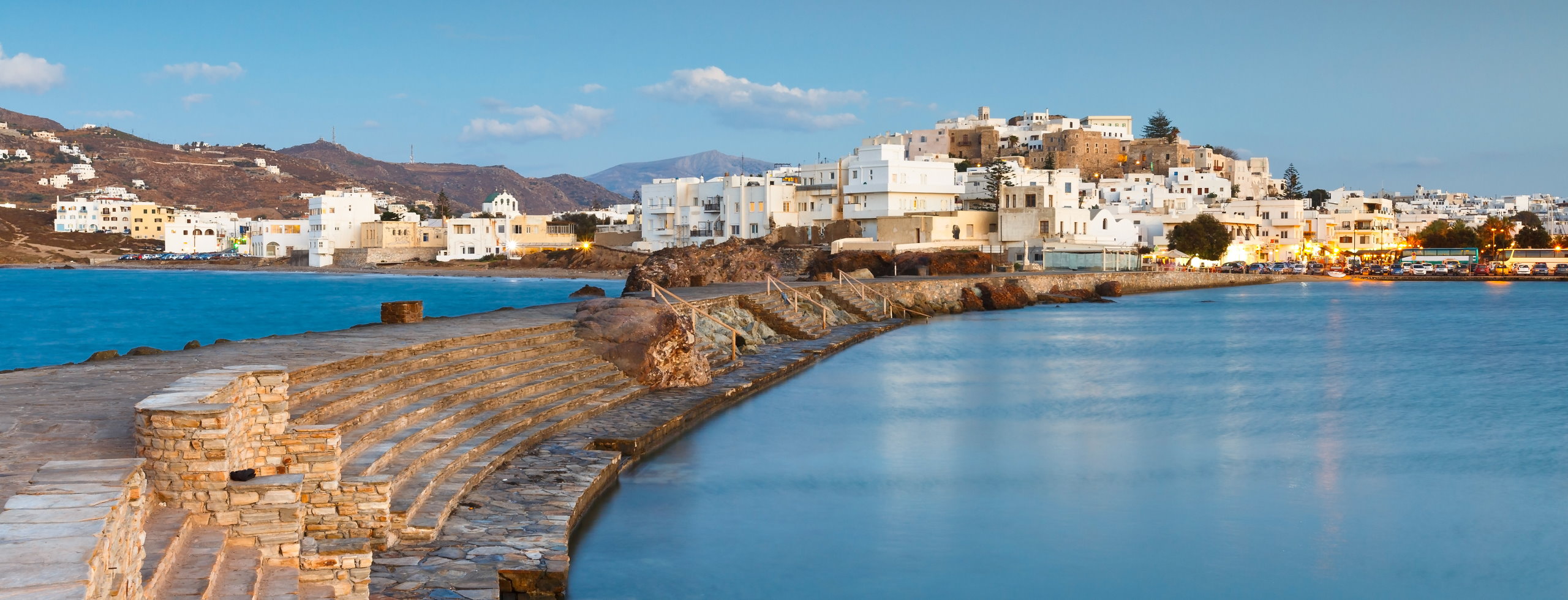-
Destinations
All Destinations
We'll craft an unsurpassed vacation just for you.
All you'll have to do is land
Choose your destination
- Pick your Trip
-
 Build your True Trip
Build your True Trip
- How It Works
- Blog
-

A Guide to Naxos
by TrueTrips
- 1
NAXOS THROUGH THE CENTURIES
Naxos’ history stretches all the way back to the 30th century BC and some of the most intriguing findings from the island are the marble idols known as Cycladic figurines that date back to the 25th century BC. While their exact purpose remains somewhat of an enigma their smooth white marble and completely abstract-stylized rendering of the human form makes them unique pieces of artwork throughout the ancient world. Even though the Cycladic civilization that produced these remains is something of a mystery, it is proven that Mycenaean people were the next to occupy Naxos as many Mycenaean remains have been discovered around the island. Between the 8th and 7th centuries BC, Naxos was the most dominant commercial force in the Cycladic islands and it was also the first Greek city state to attempt to leave the Delian League in 476 BC, an attempt that was prevented by the Athenians and consequently resulting to the loss of Naxos’ military power. From that point onwards, the fate of ancient Naxos was tied to that of Athens, eventually coming under the rule of Alexander the Great’s successors and then the Romans. In Byzantine times, Naxos was plagued by constant pirate raids. As a result, many locals started deserting the coastal towns and settling inland. However, despite facing difficult times, Naxos remained a major way station for ships traversing the Aegean Sea and even became the seat of a Christian bishop. In the aftermath of the Fourth Crusade that effectively crippled the Byzantine Empire in 1204 AD, the Venetian Marco Sanudo embarked for Naxos and soon conquered the island laying the foundations for the creation of the Duchy of the Archipelago.
A few years later, he placed himself under the authority of Henry of Flanders, the second emperor of the Latin Empire of Constantinople, and in return Henry made him a Duke. For the next 200 years, Naxos remained under the control of Venice. In 1566, Naxos fell to the Ottoman Turks who were gradually taking over the Byzantine Empire’s territories in the eastern Mediterranean but the island’s administration remained in the hands of the Venetians. The Ottomans’ main focus in Naxos was collecting taxes and duties from land and property and the Venetians provided that so the Ottoman influence was not very prevalent on the island. Following the conclusion of the Greek Revolution in 1832, Naxos became a part of the new independent Greek state and so the island’s fate followed that of Greece. During World War II Naxos was occupied by Italian forces and its inhabitants suffered considerably from lack of proper food and general isolation. Following the end of the war, Naxos struggled to recover until the 1970s when hospitality tourism started to flourish in Greece. Initially, Naxos lacked the necessary infrastructure to support tourism, but today, Naxos has become an established and well-developed island destination that has managed to keep its authentic charm despite its increasing popularity.
